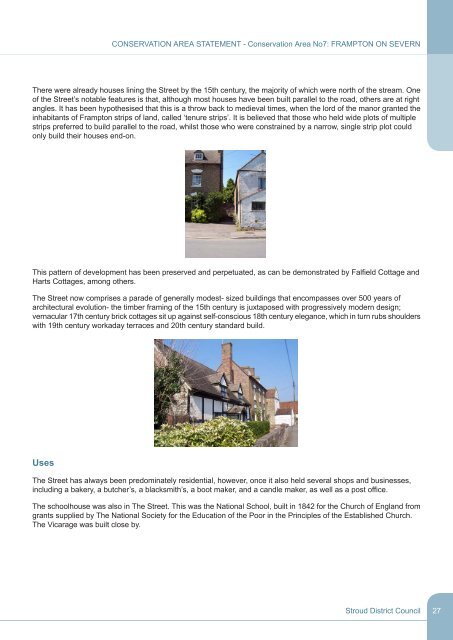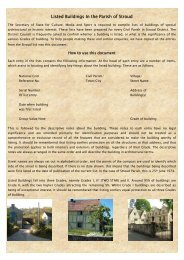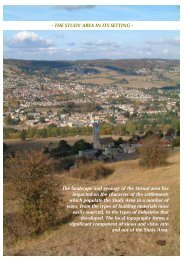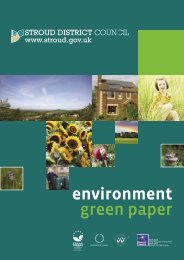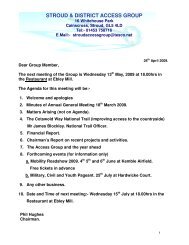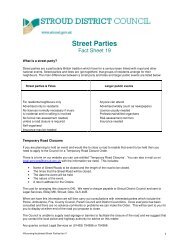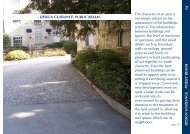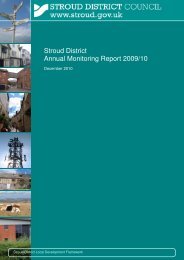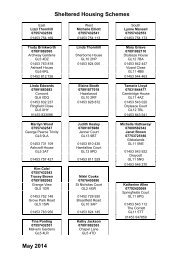CONSERVATION AREA STATEMENT - Stroud District Council
CONSERVATION AREA STATEMENT - Stroud District Council
CONSERVATION AREA STATEMENT - Stroud District Council
You also want an ePaper? Increase the reach of your titles
YUMPU automatically turns print PDFs into web optimized ePapers that Google loves.
There were already houses lining the Street by the 15th century, the majority of which were north of the stream. One<br />
of the Street’s notable features is that, although most houses have been built parallel to the road, others are at right<br />
angles. It has been hypothesised that this is a throw back to medieval times, when the lord of the manor granted the<br />
inhabitants of Frampton strips of land, called ‘tenure strips’. It is believed that those who held wide plots of multiple<br />
strips preferred to build parallel to the road, whilst those who were constrained by a narrow, single strip plot could<br />
only build their houses end-on.<br />
This pattern of development has been preserved and perpetuated, as can be demonstrated by Falfield Cottage and<br />
Harts Cottages, among others.<br />
The Street now comprises a parade of generally modest- sized buildings that encompasses over 500 years of<br />
architectural evolution- the timber framing of the 15th century is juxtaposed with progressively modern design;<br />
vernacular 17th century brick cottages sit up against self-conscious 18th century elegance, which in turn rubs shoulders<br />
with 19th century workaday terraces and 20th century standard build.<br />
Uses<br />
<strong>CONSERVATION</strong> <strong>AREA</strong> <strong>STATEMENT</strong> - Conservation Area No7: FRAMPTON ON SEVERN<br />
The Street has always been predominately residential, however, once it also held several shops and businesses,<br />
including a bakery, a butcher’s, a blacksmith’s, a boot maker, and a candle maker, as well as a post office.<br />
The schoolhouse was also in The Street. This was the National School, built in 1842 for the Church of England from<br />
grants supplied by The National Society for the Education of the Poor in the Principles of the Established Church.<br />
The Vicarage was built close by.<br />
<strong>Stroud</strong> <strong>District</strong> <strong>Council</strong><br />
27


